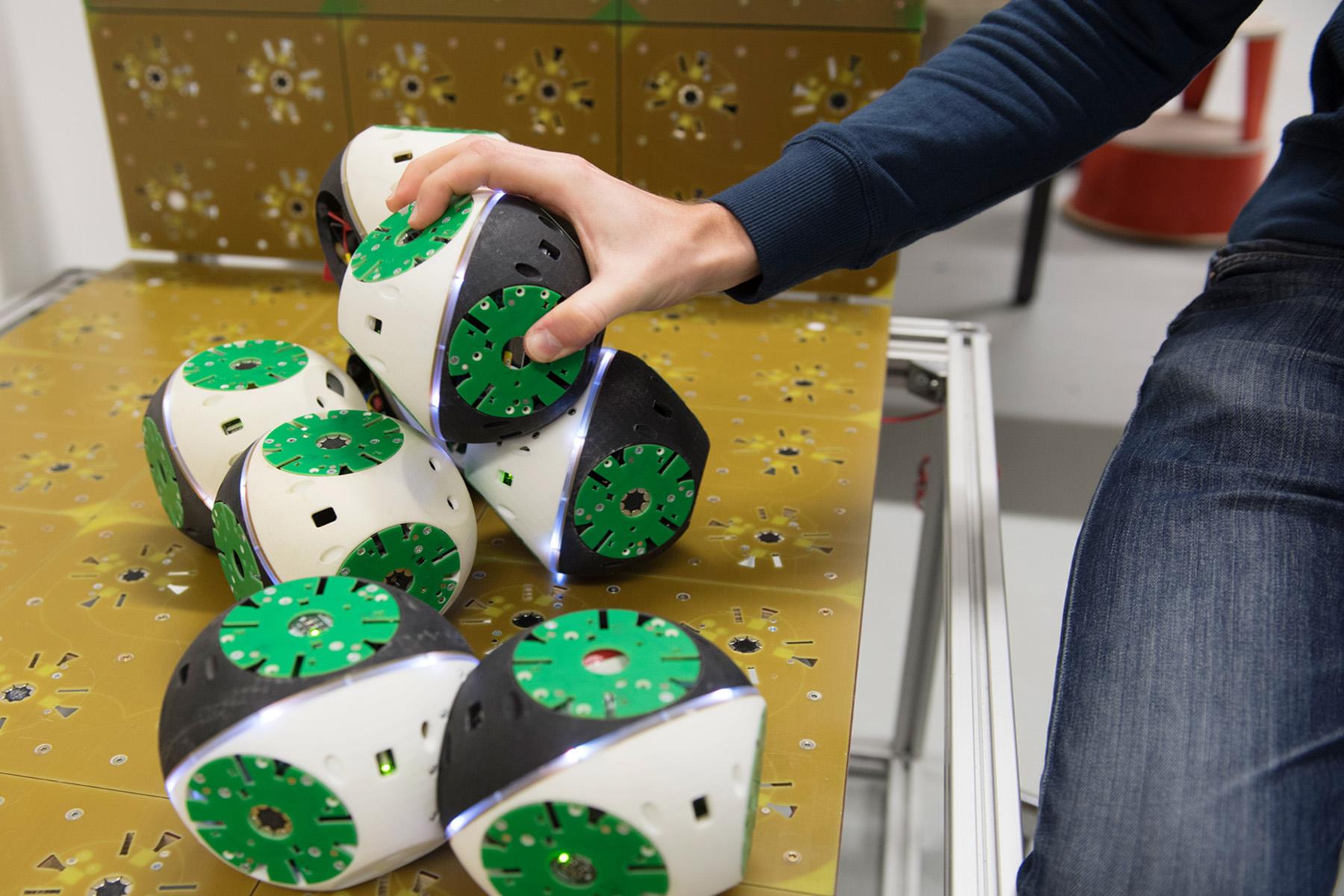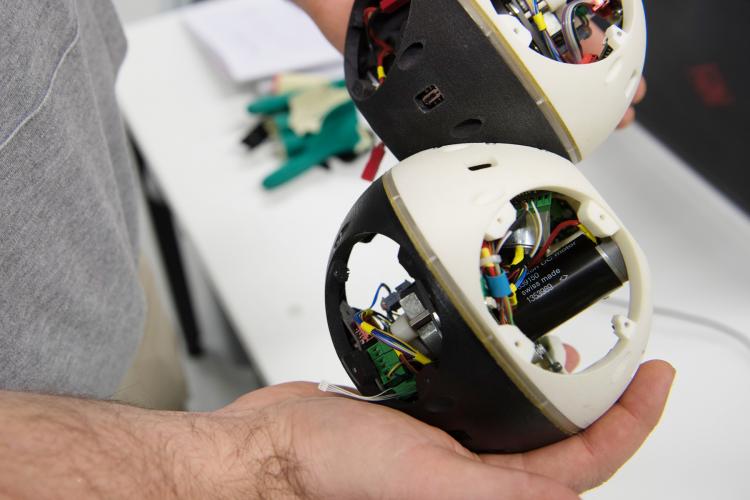Imagine a table that assembles itself from various components – or turns into a chair on command. And when you no longer need the chair, you just order it to hide in a corner of the room. Pipe dreams? Yes and no. The magic word is “modular robotics.” Engineers all over the world are exploring the possibilities and limitations of these systems. A team at the Biorobotics Laboratory at the EPFL in Lausanne is contributing to their development. “Roombots” is the name that the team gave its mechatronic plastic cubes.
The multifunctional elements consist of four rotating half-spheres. They are able to hold onto each other with a connector system based on hooks and they communicate via Bluetooth. While an individual Roombot has a well-equipped interior with a motor, gearhead, battery, and electronics, it remains quite useless without a “friend.” Different shapes, like a table or chair, can only be created in combination with other elements. “This is my science fiction project,” EPFL professor Auke Ijspeert says with a chuckle. “The fundamental idea is to migrate the concept of Lego bricks to the field of robotics.” However, there is more to it than just fun and games. “Furniture that is able to change its form and position could be very useful to people with disabilities,” says Auke Ijspeert.

A layperson might think that modular robotics is a relatively straightforward field of research – after all, any child can build something from a box of Lego bricks. However, the opposite is true. Roombots are "self-reconfigurable" which is the main engineering challenge since all the reconfiguration is no longer done manually (as with Lego), but autonomously by the robots themselves. Moreover: “There is an enormous number of ways to get from a shape A to a shape B. It's like a game of chess,” Auke Ijspeert explains.
There are practical difficulties as well: If an entire dining table consisted exclusively of robotic elements, then it would be quite expensive. This is why the engineers at EPFL also want to develop passive components – like plates, brackets, and braces – which may not have interior components like a motor and electronics, but combine perfectly with the Roombots using the same connectors. Assistive furniture is just one of the possible applications. «The modules could potentially be used for many other applications, e.g. for reconfigurable factories or reconfigurable satellites,» Auke Ijspeert says.
Whether or not Roombots will actually inhabit our living quarters and make our lives easier one day is still a matter of speculation. “Sometimes you need to dream though,” Auke Ijspeert laughs. Even when dreaming, the engineers at Lausanne rely on proven quality: The Roombot prototypes use brushed DC motors from maxon.






